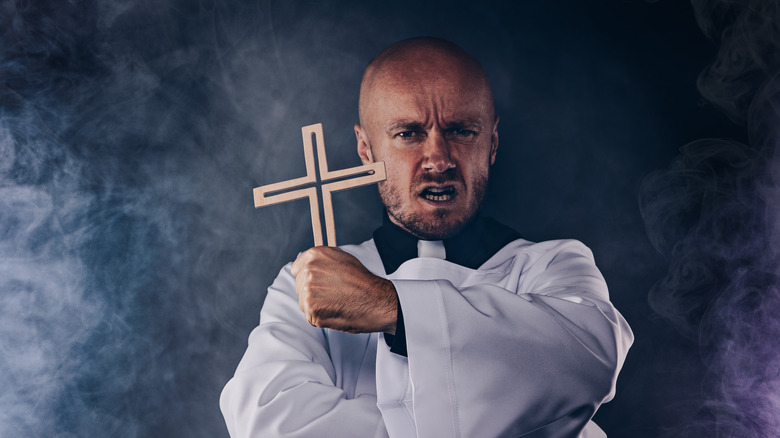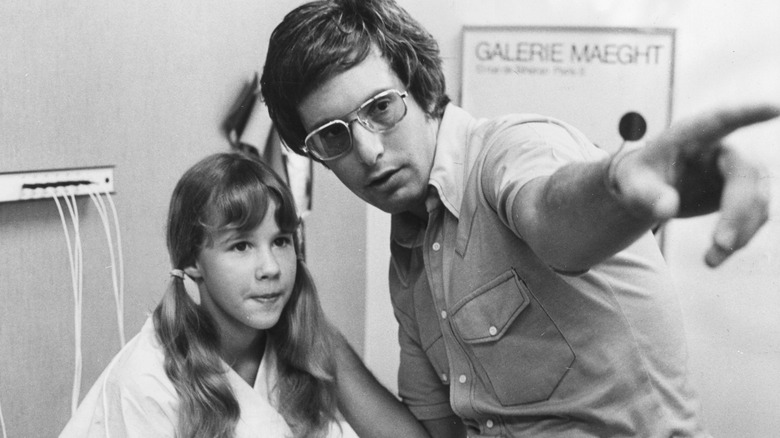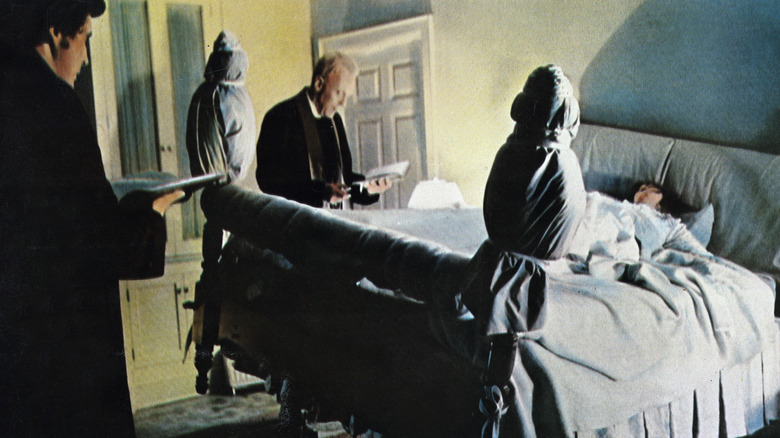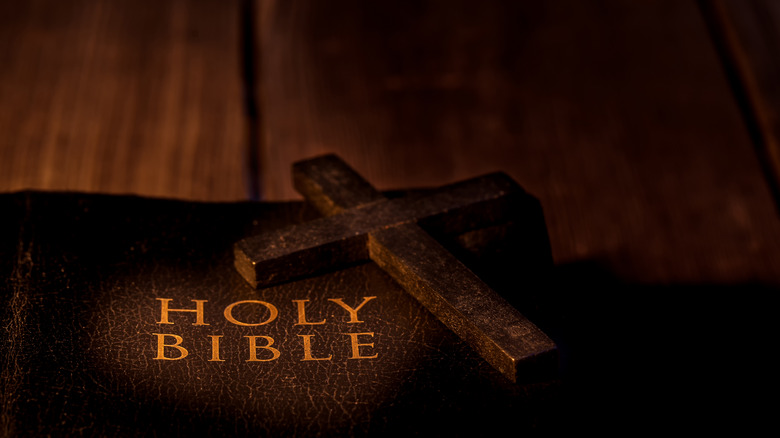The Truth Behind The Exorcism Of Roland Doe, Inspiration For The Exorcist
Catholicism has been engaged in exorcisms from the beginning. There are New Testament references to Jesus casting out demons, and for the Catholic Church, there's a procedure and ritual to accomplish that important task. As the U.S. Catholic bishops state on their website, "There are instances when a person needs to be protected against the power of the devil or to be withdrawn from his spiritual dominion. At such times, the Church asks publicly and authoritatively in the name of Jesus Christ for this protection or liberation through the use of exorcism."
It's not utilized at the drop of a hat. The first requirement is a "thorough" examination — medical, psychological, psychiatric — of the afflicted person in question. Once a determination is made that the devil really is at work, a "major exorcism" can be performed with the permission of the local bishop, but only by a priest (most often) or a bishop. The priest — the exorcist — has usually received special training to engage in the ministry, and the rite of exorcism should be performed in a church or chapel, rather than the afflicted individual's home, for instance. It's one of those aspects of church, of faith, that's rife with dramatic possibilities. Hence: "The Exorcist."
Both the film and the novel were successful
Author William Peter Blatty, raised Catholic, was a student at the Jesuits' Georgetown University when he read a story about the exorcism of a 14-year-old boy in a Washington D.C. suburb in the 1940s. His obituary in the Los Angeles Times quotes him this way: "And when I heard about this case and read the details, that seemed so compelling, I thought, 'My God, if someone were to investigate this and authenticate it, what a tremendous boost to faith it would be.' I thought, 'Someday I would like to see that happen. You know, I would like to do it.'" And he did.
The book sold magnificently, and the film, released in 1973, was a smashing, if controversial, success as well. Behind it all was a tragic story of a tortured young man's attempts to be freed. The teen on whom the film was based was known as Roland Doe, but in late 2021, Skeptical Inquirer published his real name — Ronald Hunkeler. Hunkeler died in 2020 after working at NASA for nearly 40 years, per The Guardian.
As a kid, he was a fan of Ouija boards, introduced to him by his aunt, who had recently died. Unexplainable paranormal phenomena supposedly began to occur in his home, relates Aleteia, including a foul smell, objects moving by themselves, and fiendish laughter.
The actual case involved a boy
The family first asked a Lutheran pastor for help, but he referred them to the Catholic Church. The exorcist began to work with the boy; the boy directed "obscene and blasphemous remarks" at the exorcist "in a strange, diabolical voice," says the Catholic Herald; he tore a spring from his mattress and slashed the priest's arm, requiring over 100 stitches.
After initial treatment, including a hospital stay, the boy had something of a setback — the word "Louis" supposedly appeared scratched on his chest, according to The New York Post. The family took him to St. Louis, where other priests began to perform the rituals. After a series of exorcisms, the demon possessing the boy apparently recognized the presence of St. Michael the Archangel "and was expelled from Robbie. A sound like a gunshot was heard throughout the hospital." The boy had no memory of any of it, according to the traditional account.
The real Roland Doe
Blatty wrote that one of the central themes of his novel was the "mystery of goodness," particularly in the face of "Satan's most potent attack on the race: the inducement of despair." The real exorcists fought and won that battle within that mystery: Patheos reports that according to the diary kept by one of the exorcists, the boy grew up to be "a fine young man" who married, raised children, and had a long and successful career in government before he retired.
According to The Guardian, the real Roland Doe — that is, Ronald Hunkeler — became a brilliant engineer. His career with NASA included work on the Apollo space missions and the invention of tech that shielded shuttles from extreme heat. But he was always paranoid that his colleagues would find out about his past as the inspiration for a famous horror film.
"On Halloween, we always left the house because he figured someone would come to his residence and know where he lived and never let him have peace," said a woman who lived with him, to The New York Post. "He had a terrible life from worry, worry, worry." Hunkeler retired from NASA in 2001.
What's more, his companion said to the Post, Hunkeler was faking it the whole time. "He said he wasn't possessed, it was all concocted," she said. "He said, 'I was just a bad boy.'"



